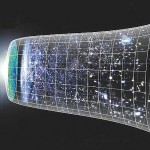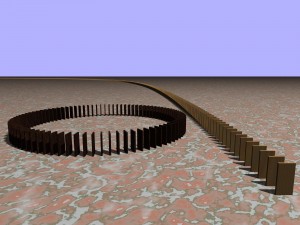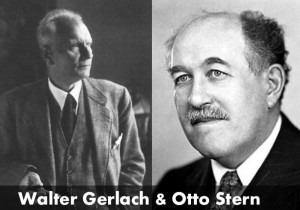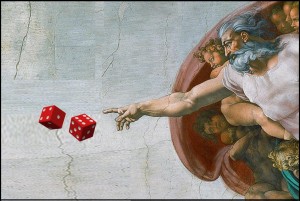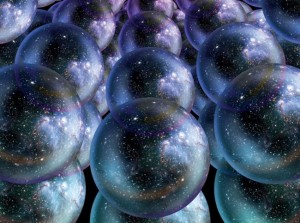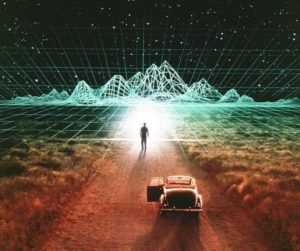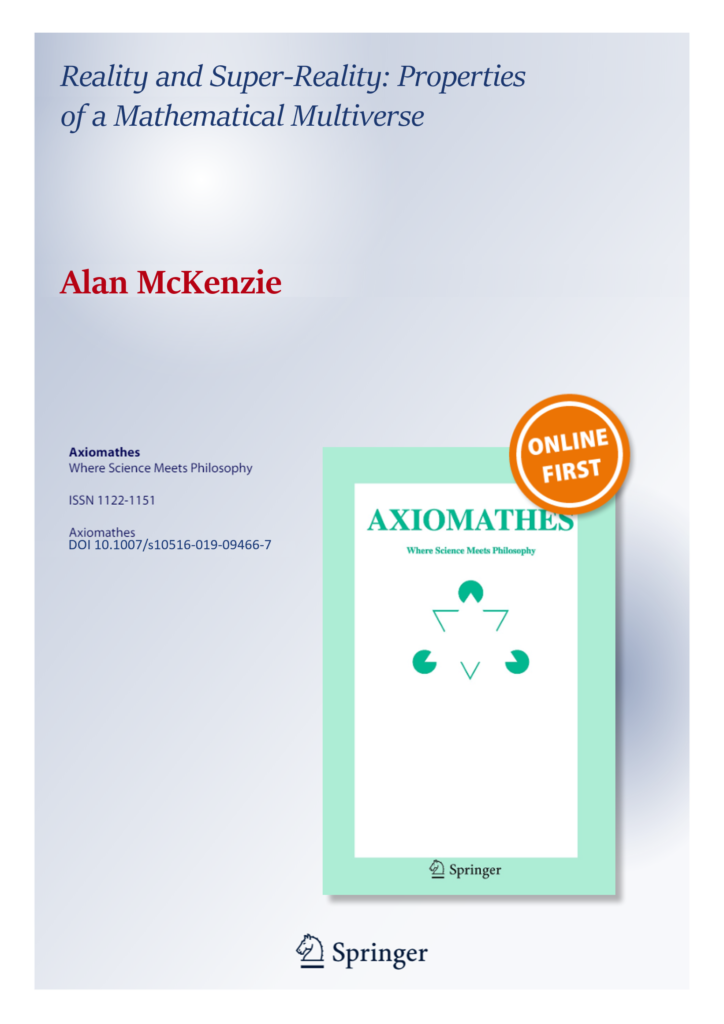
The Plexus is our universe and all the parallel universes in our multiverse. It includes all other multiverses and everything all the way to the transfinite. The Plexus is the ultimate infrastructure of reality – not just the reality of our own experience, but all the layers of reality that must forever lie beyond our direct awareness. This is not a New-Age website, and if that’s what you’re looking for, then please accept my apologies and feel free to move on. My website is grounded in mathematics and physics and, although it might be hard work, I hope that, by the time you get to the astounding conclusions, you will feel that your efforts have been well rewarded.
Save
Save
Save
Save
Save
Save
Save
I am going to take you on a journey to explain the Plexus, first described in 2016 in a paper in the arXiv electronic repository of scientific papers run by Cornell University [1]. I shall use lots of pictures and diagrams to liven up the dry, minimalist language in which that paper is written, and I hope that this may help to make the significance of some of its statements a little clearer. There isn’t any mathematics or science here that you wouldn’t get in high school. (If you are a physicist and familiar with the field, you may want to skip the foothills of the journey and begin your ascent on the steeper slopes to the summit, starting, perhaps, at the page on wave function collapse [8].)
The journey to the Plexus begins with a concept which, despite its impeccable provenance (it stems directly from Einstein’s special theory of relativity), is oddly controversial even with some theoretical physicists. That concept is the block universe [2], in which not only is your past already written – but so is your future!
The next idea that we need on our journey is that the sequence of two events can differ, depending upon the relative speeds of the observers. This is not an illusion caused by the time it takes light to reach the observers. No, we’re talking about real time – in the same way that, if the Sun explodes now, we won’t see it until eight minutes later. The “now” was when it exploded, not when we saw it later. This idea is described in the page on causality and special relativity [4].
Next, we leave relativity for the moment and enter the terrain of quantum-mechanics, starting with a quantum device that we shall make good use of: the quantum spin filter [5].
In particular, we need the quantum spin filter to demonstrate quantum entanglement [6]. This theory says that the universe is non-local – that events too far apart to influence each other can nevertheless be correlated.
Some physicists rejected this interpretation of quantum entanglement, attributing the correlations to hidden variables [7]. However, experiments since the 1970s have confirmed the quantum-mechanical interpretation and ruled out hidden variables.
In the next page, the above ideas of causality and special relativity [4] and quantum entanglement [6] are brought together to show that wave-function collapse [8] – which was key to the structure of quantum mechanics as proposed by the great Niels Bohr – does not occur.
Why is this important for the Plexus? The answer is in the Many Worlds Interpretation [9] of quantum mechanics devised by Hugh Everett to get round the need for wave-function collapse. He described a branching universe where each branch contains a different history. But we saw in the block universe [2] page that the future is already determined – there is no branching. The solution to this dilemma gives us the first insight into the structure of the Plexus.
The only solution that is compatible with both the block-universe concept and the failure of the theory of wave-function collapse is a multiverse of parallel block universes [10].
In such a structure, there are many versions of you, and in some of them you will see one outcome of a quantum experiment and, in others, you will see a different outcome. None of these versions of you is directly aware of the other versions, and this is the origin of quantum probability [11] – instead of calculating the likelihood of an outcome, you are really calculating the probability that you are in a parallel universe with that particular outcome!
This leads to the question of the size of the multiverse, but, before we answer, we need to play with infinity [12]. If you know about infinity, then it will not matter if you skip this page. The important results that I reproduce here are (1) the meanings of countably and uncountably infinite; (2) the difference between rational and irrational numbers; (3) why ratios of infinite quantities are effectively meaningless; and (4) that the square root of 2 is irrational.

Save
Save
Save
Save
Save
Save
Save
Save
Save
Save
Save
Save
Save
Save
In the Many-Worlds [9] page, we saw how to represent the different possible outcomes of a quantum event using Everett’s Many-Worlds tree structure. You need to use different configurations of branches depending upon which observer's point of view you take. In the Tree Structure of the Many Worlds Interpretation [13], we see that all of these different configurations can be represented using the group of parallel block universes containing all of the outcomes. We also work through the logic of the structure which leads us to a surprising conclusion: the number of universes in any branch of the multiverse contains components of kernels from every branch in the multiverse.

Save
Save
Save
Save
Save
Save
Save
Save
Save
Save
Save
Save
Save
Save
Save
I have also described this finding in more detail in a paper in arXiv which you can see in arXiv paper: A discrete, finite multiverse [14].
One of the results in The Finite Multiverse [15] is that the number of parallel universes in the multiverse is unimaginably great (although nevertheless finite). How can this be? How can all these universes exist? The answer is that everything – our universe and all its constituents, our multiverse, and everything beyond – is simply a vast mathematical structure.
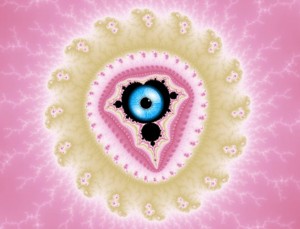
Save
Save
Save
Save
Save
Save
Save
Save
Save
Save
Save
Save
Save
This is made at least plausible in Self-Awareness in a Toy Universe [16], where we see how even a simple mathematical structure consisting of only two lines of mathematical relations can support complexity up to and including the level of self-awareness.
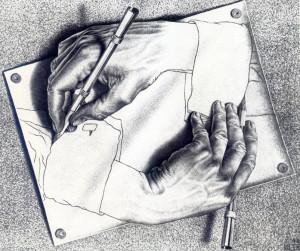
Save
Save
Save
Save
Save
Save
Save
Save
Save
Save
Save
Save
Save
Save
Save
Save
Save
However, every mathematical system worth its salt (in other words, any that support at least simple arithmetic) is subject to Gödel’s Incompleteness Theorems [17]. Even if you are familiar with these theorems, you may find the page worth a look – I have tried to express the ideas in diagrams while retaining the mathematical flavour of Gödel’s original paper.

Save
Save
Save
Save
Save
Save
Save
Save
Save
Save
Save
Save
Save
Save
Save
Save
Save
In Mathematical Structure of the Plexus [18] we find that his enigmatic footnote 48a leads directly to an infrastructure that explains quantum uncertainty, and we begin at last to see how we, and our universe, fit into the vast framework of the Plexus.
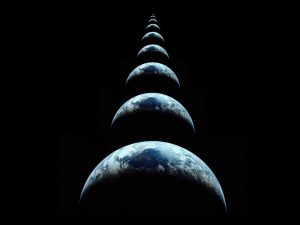
Save
Save
Save
Save
Save
Save
Save
Save
Save
Save
Save
Save
Save
Save
Save
Save
Save
Save
Save
Save
In Where are all the other Universes? [19] I explore Max Tegmark’s claim that the parallel universes of the multiverse are part of our own universe, albeit very far away.

Save
Save
Save
Save
Save
Save
Save
Save
Save
Save
Save
Save
Save
Save
Save
Save
Save
Save
Save
Save
It turns out that this is, perhaps sadly, impossible, as is explained in the arXiv paper: The Level I Multiverse is not the same as the Level III Multiverse [20]. More importantly, the Plexus is subject to Gödel incompleteness, whereas Tegmark's multiverses are not.
At the top of this website, I referred to “astounding conclusions”. Maybe that was hyperbole borne of supressed excitement for what I still consider as a mind-bending revelation – there is a reality at a higher level than our own, and which is totally inaccessible to us, except for that tiny part which makes up everything that ever was and ever will be in our own vast cosmos. For reasons that you will find in the web page, it is appropriate to call this reality a super-reality: Reality and Super-Reality [21].
I have published the findings of Reality and Super-Reality [21] in the journal Axiomathes (https://doi.org/10.1007/s10516-019-09466-7):

Save
Save
Save
Save
Save
Save
Save
Save
Save
Save
Save
Save
Topics for further development:
-
Emergent properties of a mathematical structure, including self-awareness
-
The arrow of time is a multiverse phenomenon
-
Self-awareness and free will
-
The far horizon


